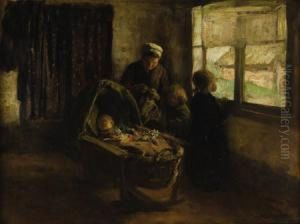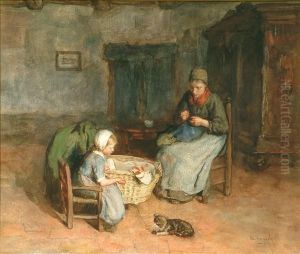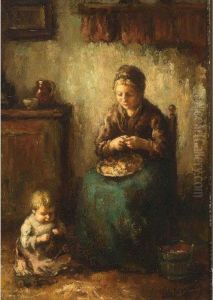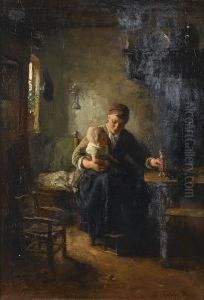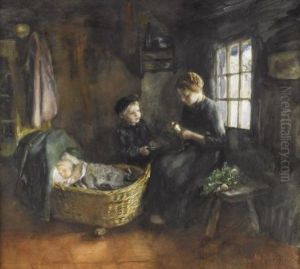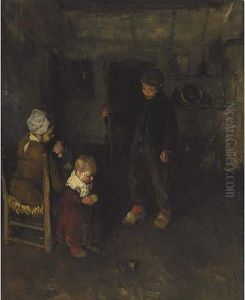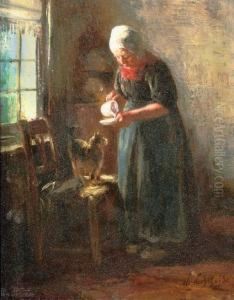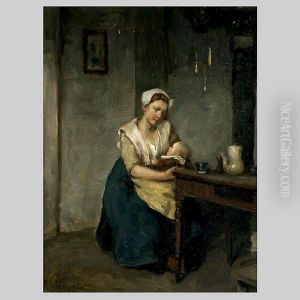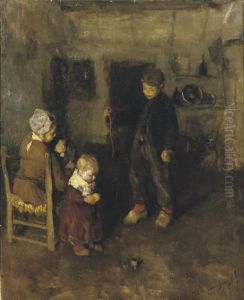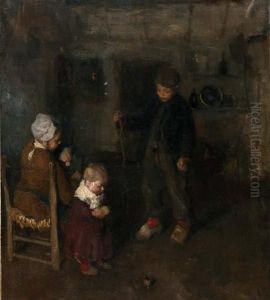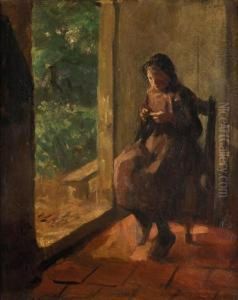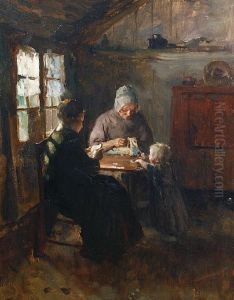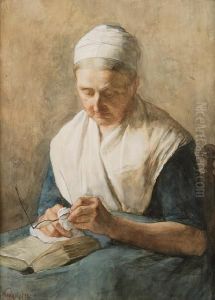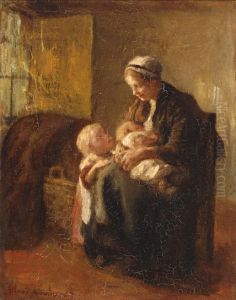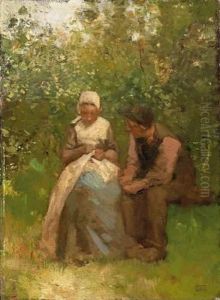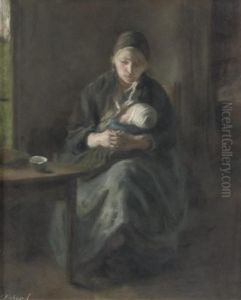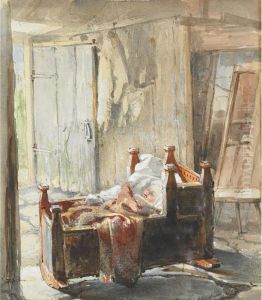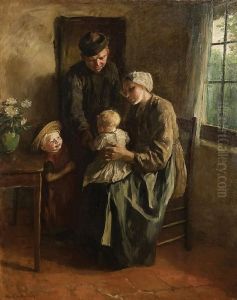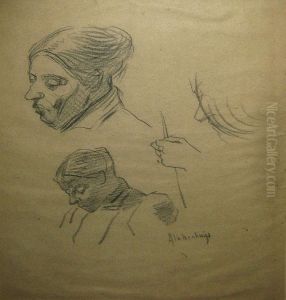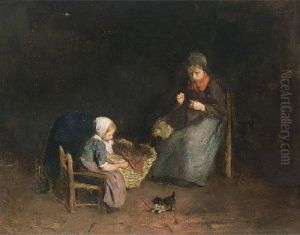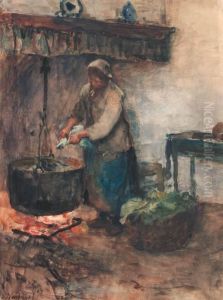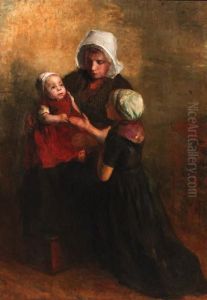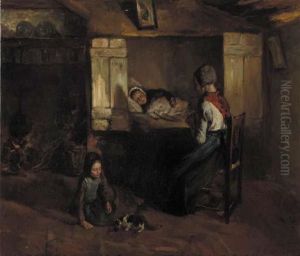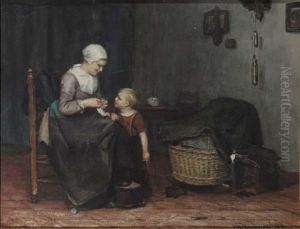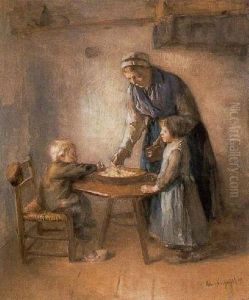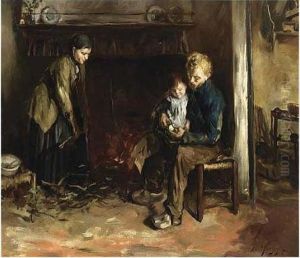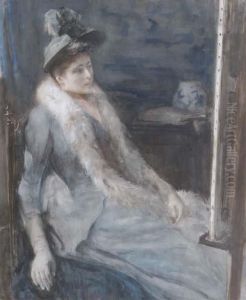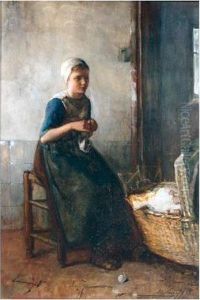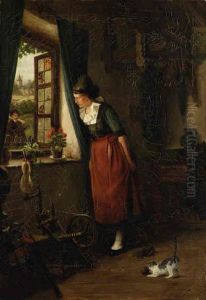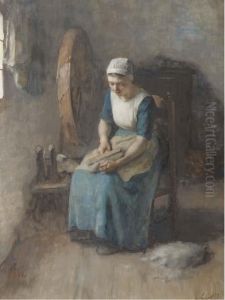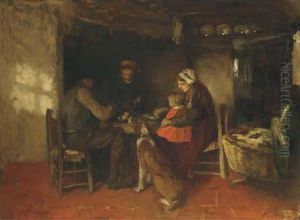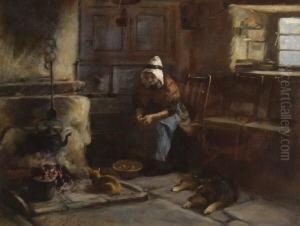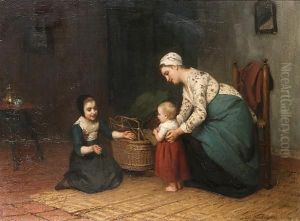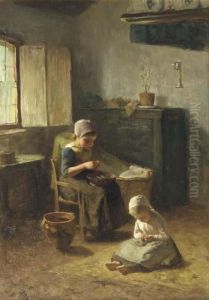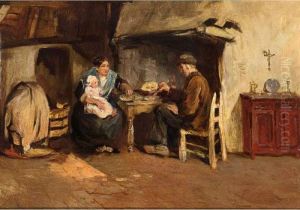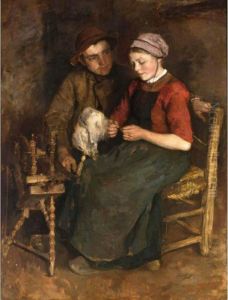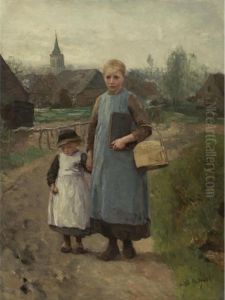Albertus Johan Neuhuys Paintings
Albertus Johan Neuhuys was a Dutch painter known for his depictions of the domestic life of peasants and the interiors of their homes, contributing to the Laren School of painting. Born on June 10, 1844, in Utrecht, Neuhuys developed an interest in art at a young age. He studied at the Academy of Fine Arts in Utrecht and later moved to Antwerp to continue his education under the guidance of Charles Verlat at the Royal Academy of Fine Arts.
Neuhuys was greatly influenced by the Hague School, a group of artists who painted in a realist style and were inspired by the French Barbizon School. The Hague School artists often focused on the Dutch countryside and the daily lives of its inhabitants. Neuhuys, in particular, was known for his tender and warm scenes of peasant families, showcasing a compassionate view of their lives. His use of light and shadow brought a gentle, intimate atmosphere to his work, and his skilled portrayal of textures, such as the roughness of wooden furniture or the softness of textiles, added a tactile quality to his paintings.
During his career, Neuhuys traveled and worked in various locations. He spent some time in Düsseldorf, a center for art in the 19th century, and also visited the artists' colony in Laren, North Holland, which was becoming a hub for painters. Laren provided an ideal setting for Neuhuys, with its picturesque landscapes and rustic peasant cottages. His work from this period reflects the tranquility and simplicity of rural life.
Albertus Johan Neuhuys was not only a painter but also an etcher and watercolorist. His versatility across mediums allowed him to capture various moods and moments from everyday life with sensitivity and detail. Throughout his life, he exhibited his works in the Netherlands and abroad, gaining recognition for his contributions to Dutch art.
Neuhuys passed away on February 6, 1914, but left behind a legacy of art that continues to be appreciated for its portrayal of 19th-century Dutch rural culture. His paintings remain a testament to the Laren School and the broader movement of realism in Dutch art during that era.
